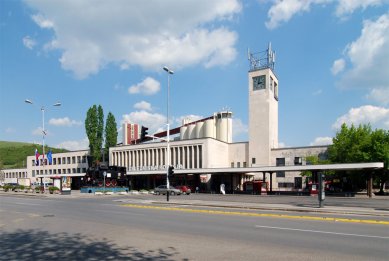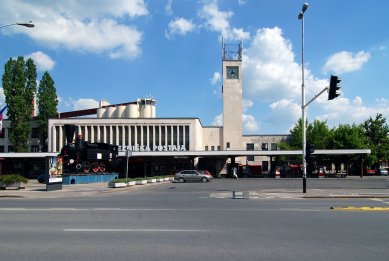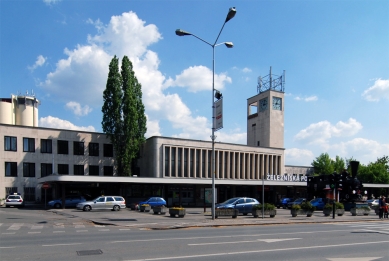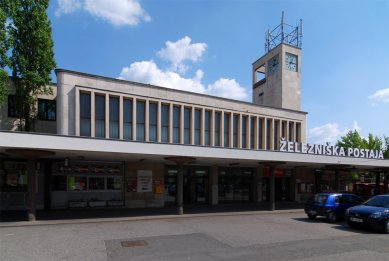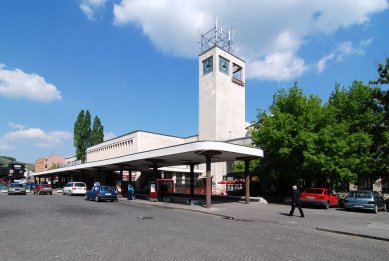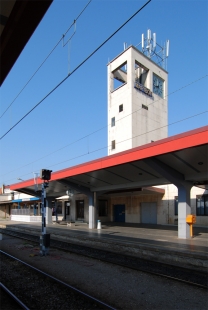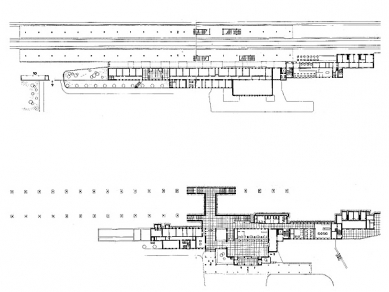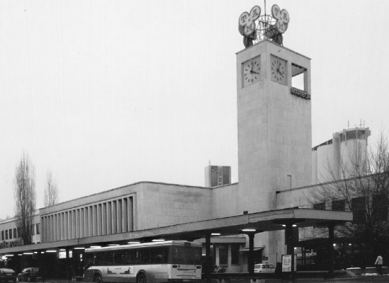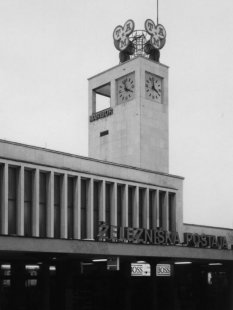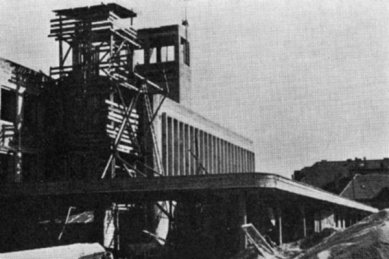
Main Train Station Maribor
<translation>Kolodvor Maribor</translation>

Maribor, the oldest second largest city in Slovenia, has been a significant transport hub since time immemorial. The mention of the oldest city in the Styrian part of Slovenia dates back to the early 13th century. The significance of the settlement along the Drava River under the Markburg castle increased in the mid-19th century when a railway connection was established between Vienna and Trieste. The railway route touching the eastern edge of the historical center contributed to an unprecedented development of the city. The growth of industry and the economy created an urgent need for a regulatory plan to prevent uncontrolled urban sprawl and to preserve its historical qualities. Plečnik's pupil Jaroslav Černigoj established the foundations of modern architecture in Maribor in the early 1930s when he created the city's regulatory plan in 1938 in a functionalist spirit.
Milan Černigoj studied under Plečnik five years later than his brother Jaroslav and operated his own studio in Maribor from the 1950s, striving to continue the idea of functionalism. Among his most significant works is the building of the main railway station, notable not only for its architectural but mainly for its urbanistic value. The prominent linear structure oriented north-south runs along the central city communication, Partizanska cesta, and simultaneously terminates the axis of Razglova Street emerging from the city center. The linearity of the design logically arises from the copying of the railway line and the need for passenger platforms. This dynamic horizontal composition is complemented by a single vertical element, the tower with clocks. The central boarding area is designed as a hall with basilica lighting. The station's entrance area is complemented by a light canopy protecting arrivals from the whims of the weather and currently also serves as a bus station platform. The protruding reinforced concrete slab supported by thin columns with mushroom-shaped capitals is followed by the gradating mass of the railway building clad in stone slabs.
Milan Černigoj studied under Plečnik five years later than his brother Jaroslav and operated his own studio in Maribor from the 1950s, striving to continue the idea of functionalism. Among his most significant works is the building of the main railway station, notable not only for its architectural but mainly for its urbanistic value. The prominent linear structure oriented north-south runs along the central city communication, Partizanska cesta, and simultaneously terminates the axis of Razglova Street emerging from the city center. The linearity of the design logically arises from the copying of the railway line and the need for passenger platforms. This dynamic horizontal composition is complemented by a single vertical element, the tower with clocks. The central boarding area is designed as a hall with basilica lighting. The station's entrance area is complemented by a light canopy protecting arrivals from the whims of the weather and currently also serves as a bus station platform. The protruding reinforced concrete slab supported by thin columns with mushroom-shaped capitals is followed by the gradating mass of the railway building clad in stone slabs.
The English translation is powered by AI tool. Switch to Czech to view the original text source.
0 comments
add comment


